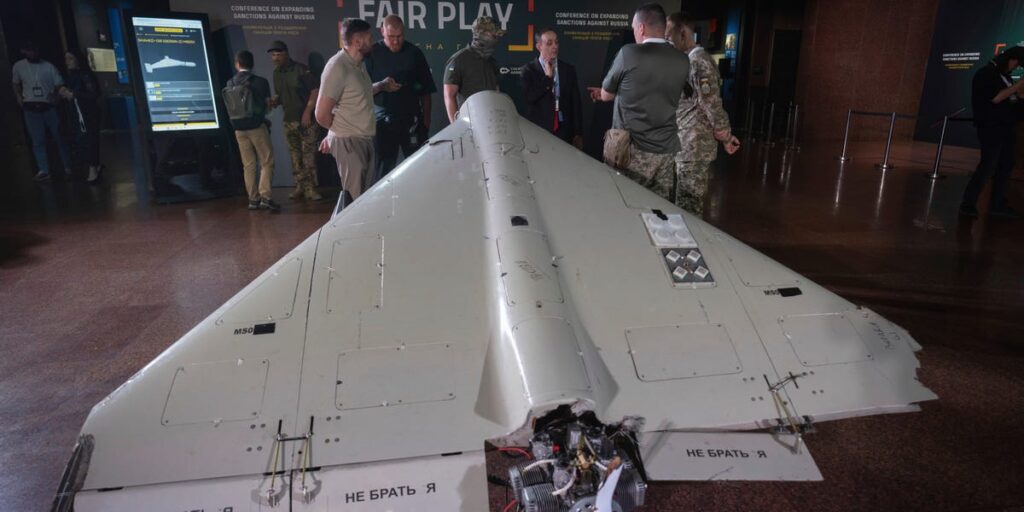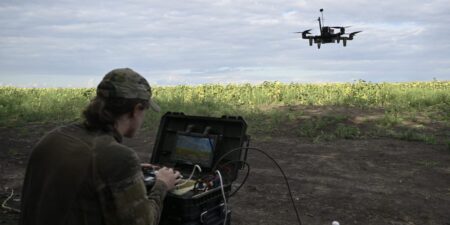Russia is regularly hammering Ukrainian cities with one-way attack drones. Kyiv, however, intends to meet that threat by pouring millions of dollars into interceptor drones designed to engage Russian threats.
In a statement posted to Telegram on Wednesday, Defense Minister Denys Shmyhal announced four contracts for drone intercept technology worth over $72 million.
“Special attention was given to drone interceptors capable of countering Russian Shaheds,” Shmyhal said in the statement, which noted that Ukraine is also pursuing international partnerships for additional purchases.
Earlier in the month, the director of Ukraine’s Defense Procurement Agency, Arsen Zhumadilov, told local media that the agency had contracts for tens of thousands of interceptor drones, weapons which are now being mass-produced. Zhumadilov did not provide a value for those contracts.
Interceptor drones have become an inexpensive option for defeating front-line loitering munitions and higher-end uncrewed reconnaissance assets, but the drones are increasingly being seen as an option for countering Shaheds, a term for a family of Iranian-designed attack drones that Russia also makes domestically.
Russia frequently deploys homemade versions of the Iranian-designed Shahed, called the Geran-2, to bolster its strike packages, mixing them in with decoy activity and missile attacks on Ukrainian cities. Such employment creates a more complicated threat for Ukrainian air defense systems, already stretched thin.
Ukraine has reported that Russia is arming its drones with bigger payloads and thermobaric warheads, increasingly operating them in ways that make them difficult to shoot down with inexpensive solutions, like mounted machine guns.
Ukraine has more sophisticated air defenses, but limited availability and prohibitive costs are pushing the country to find more innovative solutions.
Ukraine is believed to have about half a dozen operational Patriot batteries among its other air defenses. A Patriot battery consists of as many as eight launchers, which can hold up to 16 missiles. These weapons are useful for countering aircraft and ballistic missile threats. US lawmakers approved a decision to send more Patriot air defense systems to Germany last week after agreeing that Germany would frontload Patriot systems to boost Ukrainian defenses.
Each Patriot interceptor missile costs over $3 million. Missile production is limited, and overuse strains already limited stockpiles. That makes them less than ideal for combating drones.
Defensive interceptor drones function similarly to interceptor missiles, though drones are drastically cheaper and more easily produced.
Without other options, the continuous barrage of Shahed-style drones flooding Ukrainian airspace, coupled with missile strikes, is bound to overwhelm Ukraine’s air defenses. Recent assessments by Western military experts suggest Russia is poised to overwhelm Ukrainian cities with thousands of drones in a single night.
In an effort to tout domestic drone production, Russian state media recently broadcast modified American-designed pickup trucks featuring a launch configuration for Shahed-style drones, which are capable of loitering in the air before diving onto a target.
Russia began using the Iranian-manufactured drones three years ago, but it quickly turned to its own domestic industries for producing the drones.
Read the full article here
















